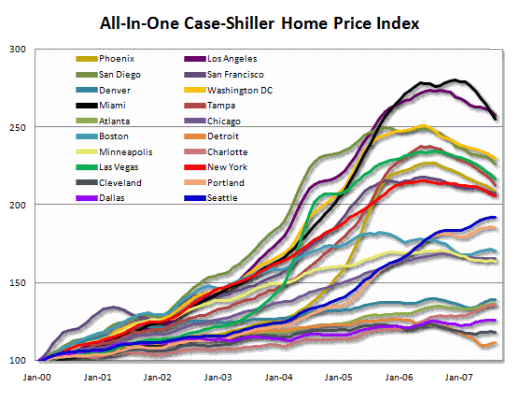The term risk may be traced back to classical Greek rizikon [Greek ριζα, riza], meaning root, later used in Latin for "cliff". The term is used in Homer’s Rhapsody M of Odyssey "Sirens, Scylla, Charybdee and the bulls of Helios [Sun]" Odysseus tried to save himself from Charybdee at the cliffs of Scylla, where his ship was destroyed by heavy seas generated by Zeus as a punishment for his crew killing before the bulls of Helios [the god of the sun], by grapping the roots of a wild fig tree.
For the sociologist Niklas Luhmann the term ‘risk’ is a neologism which appeared with the transition from traditional to modern society." In the Middle Ages the term risicum was used in highly specific contexts, above all sea trade and its ensuing legal problems of loss and damage." In the vernacular languages of the 16th century the words rischio and riezgo were used, both terms derived from the Arabic word "رزق", "rizk", meaning ‘to seek prosperity’. This was introduced to continental Europe, through interaction with Middle Eastern and North African Arab traders. In the English language the term risk appeared only in the 17th century, and "seems to be imported from continental Europe." When the terminology of risk took ground, it replaced the older notion that thought "in terms of good and bad fortune." Niklas Luhmann [1996] seeks to explain this transition: "Perhaps, this was simply a loss of plausibility of the old rhetorics of Fortuna as an allegorical figure of religious content and of prudentia as a [noble] virtue in the emerging commercial society."
Scenario analysis matured during Cold War confrontations between major powers, notably the United States and the Soviet Union. It became widespread in insurance circles in the 1970s when major oil tanker disasters forced a more comprehensive foresight. The scientific approach to risk entered finance in the 1980s when financial derivatives proliferated. It reached general professions in the 1990s when the power of personal computing allowed for widespread data collection and numbers crunching. Governments are using it, for example, to set standards for environmental regulation, e.g. "pathway analysis" as practiced by the United States Environmental Protection Agency…

the probability of a hazard resulting in an adverse event, times the severity of the event
For all of the chatter about risk and risk assessment in the investment world and their ubiquitous reliance on computers and mathematical models, I’d bet that the very successful investors are using felt intuition as much as all of their sophisticated tools – much as they did in ancient times. It is, after all gambling in another suit of clothes, but nothing more than gambling nonetheless.
I think the reason I’ve been so obsessed with the Abacus deal – the one the SEC has charged Goldman Sachs with – is because it’s the first one since the crash that really put enough details on the table for us to really see what these people were doing. And it has turned out to be something of a mystery novel – The Case of the French Trader. But unlike actual gambling in a casino, it didn’t hinge on "the odds" or any great computer models of risk. If anything, it was about how to hide risk. In fact, there were innumerable examples of how quantitative measures – published stats – hid the truth.
Collateralized Debt Obligations [CDOs] are bundles residential mortgages that were being bought and sold. Their value was totally a function of whether they were likely to be paid off or not. And that risk assessment was made by Rating Agencies [paid by the people bundling the CDO]. Those ratings were grossly wrong. As it turned out, virtually all of the CDOs in the Abacus offering failed, independent of their ratings:
 An example of where risk management technology was available but unused was the Case Shiller Index – a measure of the house pricing in regional markets. The mortgage bonds in the Abacus package were from places where there was the highest inflation of house prices ergo the greatest likelihood of mortgage default if the housing bubble were to burst. How was this risk hidden? Abacus was marketed and ultimately sold to European Banks who relied on ratings because they weren’t so "on top of" the American housing market. The outside collateral agency, ACA, that supposedly picked the CDOs was essentially "rubber stamping" the picks of Hedge Fund Manager, John Paulson, someone who was picking CDOs that would likely fail, a fact unknown to the buyers. Likewise, the overall Case-Shiller Index indicated that the housing bubble had already burst [I don’t know whether those particular numbers were available at the time of the deal].
An example of where risk management technology was available but unused was the Case Shiller Index – a measure of the house pricing in regional markets. The mortgage bonds in the Abacus package were from places where there was the highest inflation of house prices ergo the greatest likelihood of mortgage default if the housing bubble were to burst. How was this risk hidden? Abacus was marketed and ultimately sold to European Banks who relied on ratings because they weren’t so "on top of" the American housing market. The outside collateral agency, ACA, that supposedly picked the CDOs was essentially "rubber stamping" the picks of Hedge Fund Manager, John Paulson, someone who was picking CDOs that would likely fail, a fact unknown to the buyers. Likewise, the overall Case-Shiller Index indicated that the housing bubble had already burst [I don’t know whether those particular numbers were available at the time of the deal].
The point is that this is not really gambling. This particular deal appears to be a scam. Paulson wanted to make a winning bet based on something that was common knowledge to anyone who really delved into things. Goldman Sachs did everything possible to obscure the risk in their product, including hiding Paulson’s intent.
But beyond the specific Abacus deal, was there deceit in the whole housing bubble story? Why did the housing prices escalate so rapidly? Was someone "pulling the strings" to make this occur? When did CDOs first appear on the scene? "The first CDO was issued in 1987 by bankers at now-defunct Drexel Burnham Lambert Inc. for Imperial Savings Association, a savings institution that later became insolvent and was taken over by the Resolution Trust Corporation on June 22, 1990. A decade later, CDOs emerged as the fastest growing sector of the asset-backed synthetic securities market." If you recognize the name, Drexel Burnham Lambert, that was the firm that bankrupted in the famous case of Michael Milken, the "junk bond" king. And when did the "derivatives market" open up? It started in 1993 when Wendy Gramm, head of the CFTC [Commodity Futures Trading Commission] partially lifted the ban placed by the Shad-Johnson Accord of 1982 [as she left the CFTC to go on the ENRON Board], but came to completion with her husband’s Commodity Futures Modernization Act of 2000 [Senator Phil Gramm].
I doubt that the "invention" of CDOs and the opening of the derivative trading markets was specifically designed to cause a housing bubble. They were both introduced as ways of buying, selling, and managing risk. But they lead directly to the housing bubble because the lenders were no longer incentivized to maximize collection rates, they were paid by how many loans they could make – selling off the risk almost as soon as the loan was closed. Packaging loans into a CDO spread the risk among many loans. The easy availability of loans drove housing prices up – et cetera, et cetera, et cetera – all working against the gravity of the real value of the real estate.
"We can put light where there’s darkness, and hope where there’s despondency in this country. And part of it is working together as a nation to encourage folks to own their own home."
– President George W. Bush, Oct. 15, 2002

Sorry, the comment form is closed at this time.